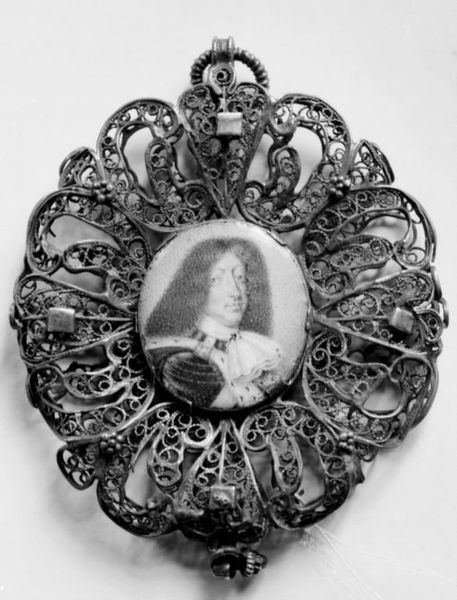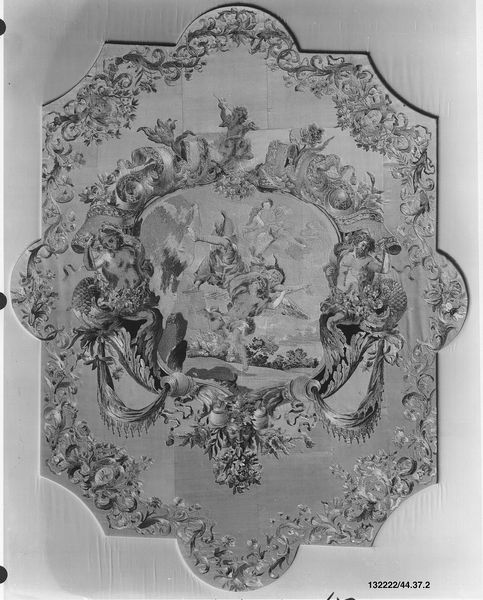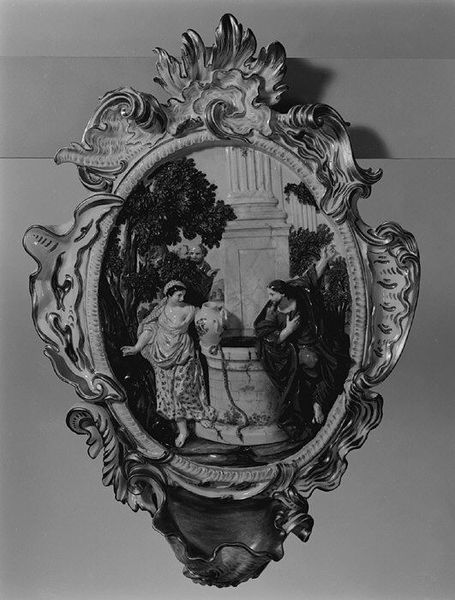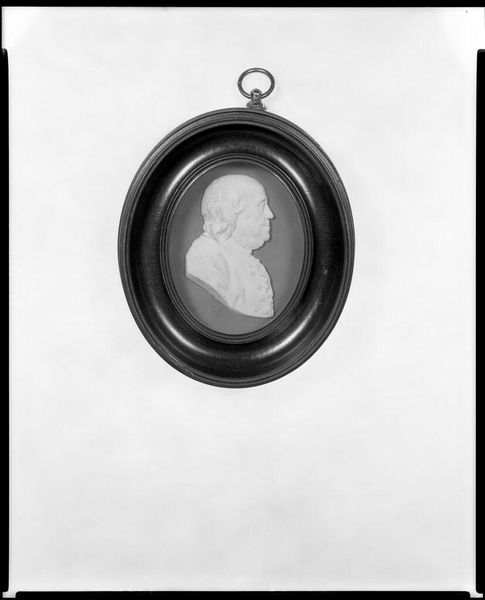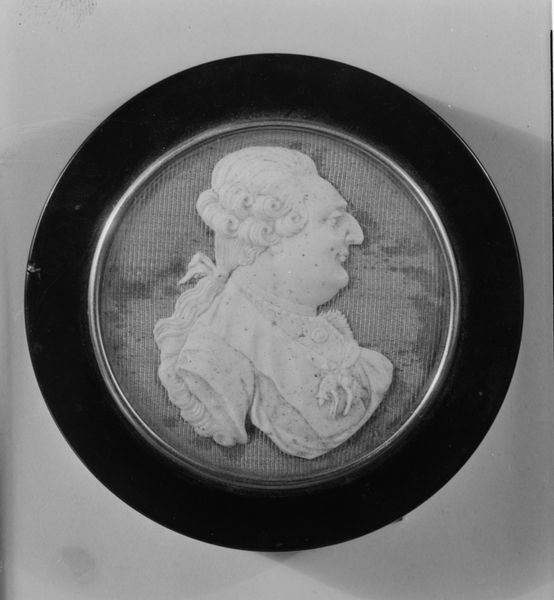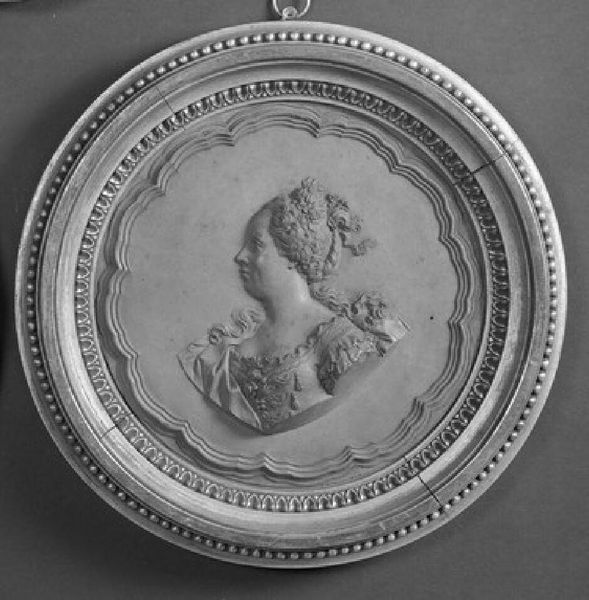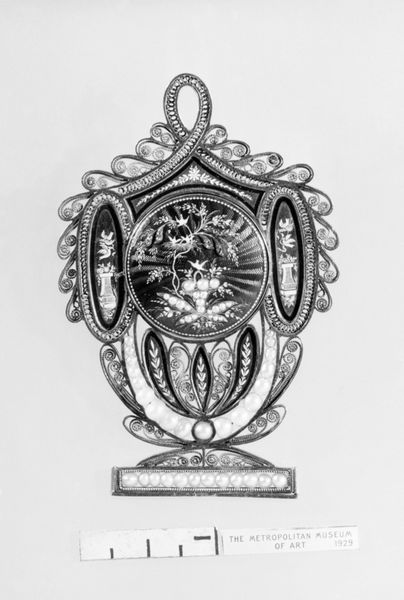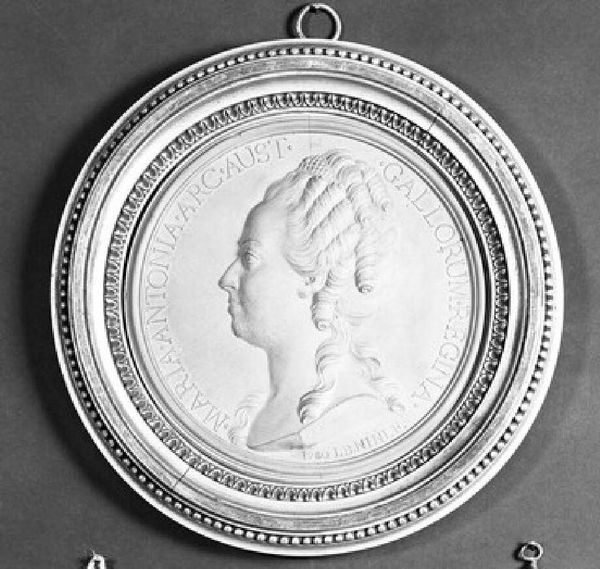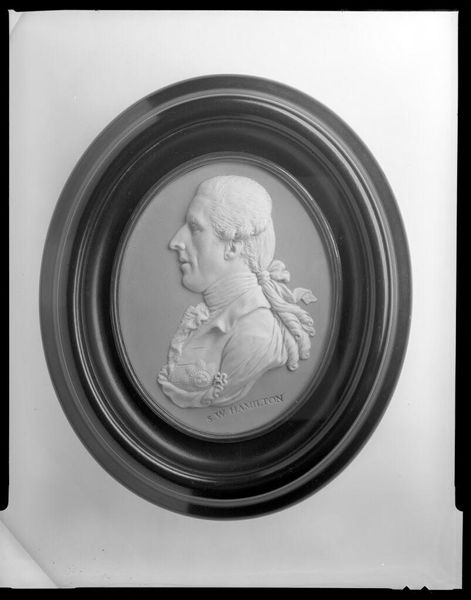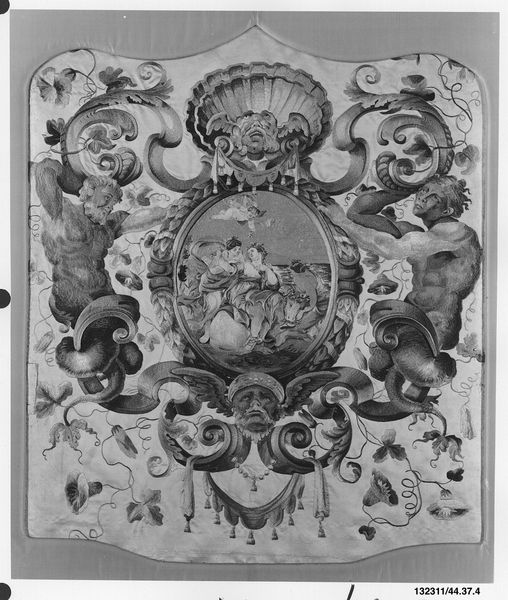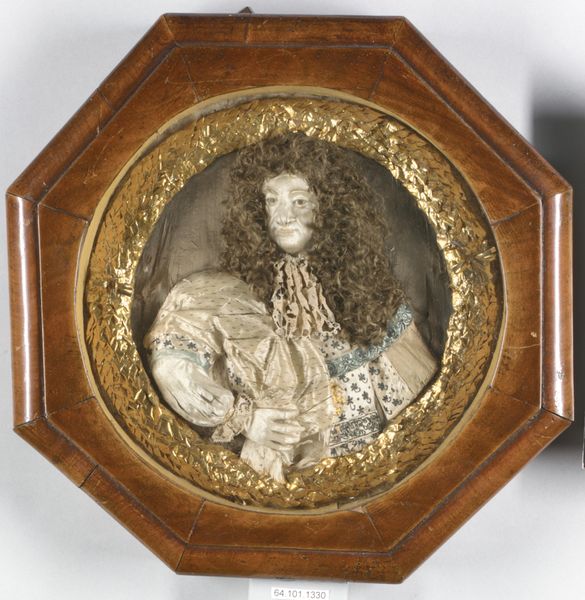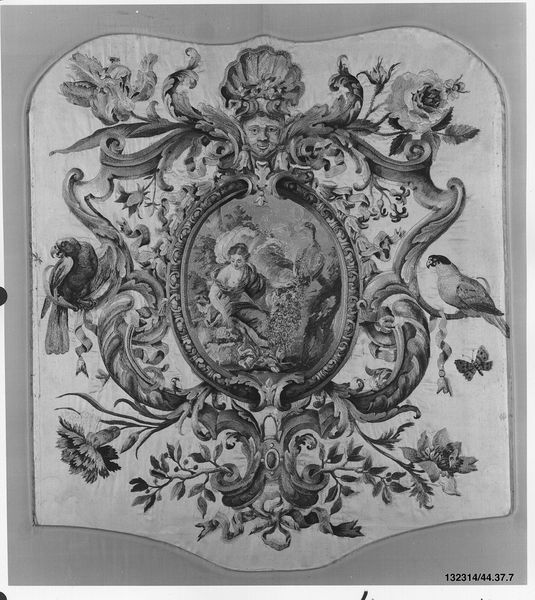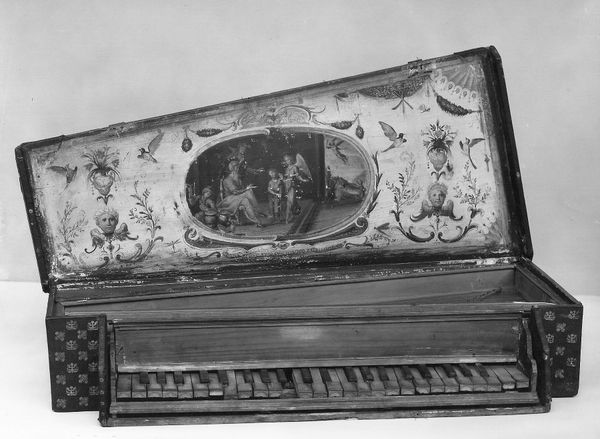
metal, gold, sculpture, engraving
#
portrait
#
baroque
#
metal
#
sculpture
#
gold
#
sculptural image
#
black and white theme
#
sculpture
#
engraving
Dimensions: 2.5 cm (height) x 2.2 cm (width) (Netto), 8 cm (height) x 5.8 cm (width) (Brutto)
Editor: We're looking at "Frederik III," a metal sculpture made by Paul Prieur in 1669. The level of detail in the filigree is astonishing, it feels both delicate and imposing at the same time. What’s the story behind displaying royalty like this? Curator: This piece reveals a great deal about the public role of art and the politics of imagery in the Baroque era. It’s not merely a portrait; it's a carefully constructed representation of power. The elaborate frame, topped with what seems to be a crown, serves to enhance Frederik III's status, doesn’t it? Think about how display practices, like framing, affected the reception of royal imagery. Editor: So, it’s like a propaganda piece? It makes sense that someone would spend so much time on details if they were trying to legitimize Frederik's reign. Curator: Precisely! Royal portraiture during this time functioned as a tool for solidifying political authority. Consider the materials used – metal, possibly gold or gilded – suggesting enduring value and reinforcing the King’s association with wealth and stability. These choices aren't arbitrary; they are embedded with meaning designed to impress upon the viewer a particular idea of kingship. How might the location where this sculpture was displayed influence that meaning even further? Editor: If it was displayed somewhere very public, like a town square, it could further enforce the idea of Frederik being a symbol of stability and power. Whereas if it were in a palace, it might have been meant more as a demonstration of wealth for those in court. Curator: Exactly. Museums, like the SMK, also contribute to that meaning-making process, don't they? Displaying it here presents Frederik III as part of an art historical canon. Editor: It’s fascinating how the presentation of a piece changes its meaning so dramatically. Curator: Indeed. Context is key. And this little piece speaks volumes about how art and politics have always been intertwined.
Comments
No comments
Be the first to comment and join the conversation on the ultimate creative platform.
